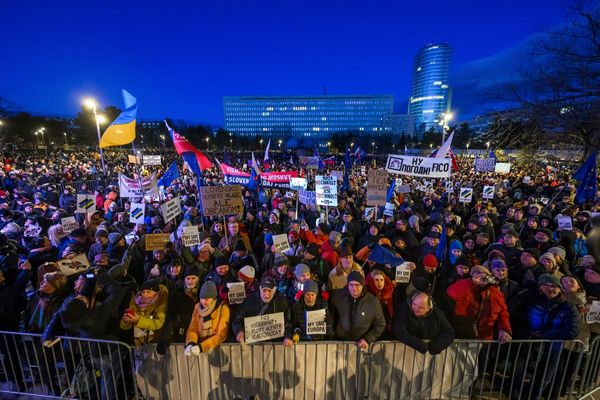
March arabica coffee (KCH25) on Tuesday closed up +1.35 (+0.41%), and January ICE robusta coffee (RMF25) closed up +33 (+0.65%).
Arabica coffee prices traded higher on continued support from below-average rain last week in Brazil, the world's largest producer of arabica coffee. Somar Meteorologia reported Monday that Brazil's biggest arabica coffee growing area of Minas Gerais received 43.6 mm of rain last week, or 83% of the historical average.
Robusta coffee prices saw support Tuesday as rain in Vietnam slowed the harvest. Coffee exporter Tuan Loc Commodities said, "This wet weather is expected to persist through Dec 26, disrupting coffee harvesting or at best slowing it significantly."
Coffee prices saw support after consultancy group Safras & Mercado last Friday estimated the 2025/26 Brazilian coffee crop at 62.45 million bags, down -5% yr/yr. Safras predicts that arabica output will fall -15% yr/yr to 38.35 million bags due to drought and that robusta production will be 24.1 million bags.
In a bearish factor for coffee prices, the Brazilian real (^USDBRL) remains weak and is consolidating mildly above last Wednesday's record low against the dollar. The weak real encourages export selling by Brazil's coffee producers.
A bearish factor for arabica coffee is an increase in current supplies after ICE-monitored arabica coffee inventories on Monday climbed to a 2-1/2 year high of 990,395 bags and remained at that level on Tuesday.
Robusta coffee is also under pressure due to a jump in inventories after ICE-monitored robusta coffee inventories on Tuesday rose to a 2-month high of 4,092 lots. ICE-monitored robusta coffee inventories have risen from last Monday's 7-1/2 month low of 3,672 lots.
Coffee prices have rallied sharply over the past two weeks based on the outlook for a smaller Brazilian coffee crop. Last Tuesday, March arabica posted a contract high, and the Dec coffee nearest-futures contract (Z24) posted a record high. Also, robusta coffee rose to a 2-week high. The outlook for a smaller coffee crop in Brazil sent prices soaring after Volcafe last Tuesday cut its 2025/26 Brazil arabica coffee production estimate to 34.4 million bags, down by about 11 million bags from a September estimate after a crop tour revealed the severity of an extended drought in Brazil. Volcafe projects a global 2025/26 arabica coffee deficit of 8.5 million bags, wider than the 5.5 million bag deficit for 2024/25 and the fifth consecutive year of deficits.
Last Wednesday's bi-annual report from the USDA was mixed for coffee prices. The USDA's Foreign Agriculture Service (FAS) projected that world coffee production in 2024/25 will increase +4.0% y/y to 174.855 million bags, with a +1.5% increase in arabica production to 97.845 million bags and a +7.5% increase in robusta production to 77.01 million bags. The USDA's FAS forecasts that 2024/25 ending stocks will fall by -6.6% to a 24-year low of 20.867 million bags from 22.347 million bags in 2023/24. Separately, the USDA's FAS on Nov 22 projected Brazil's 2024/25 coffee production at 66.4 MMT, below the USDA's previous forecast of 69.9 MMT. The USDA's FAS projects Brazil's coffee inventories at 1.2 million bags at the end of the 2024/25 season in June, down -26% y/y.
Robusta coffee has support on smaller supplies from Vietnam when the Vietnam General Department of Customs last Wednesday reported that Vietnam Nov coffee exports plunged -47 % y/y to 63,019 MT, and Jan-Nov coffee exports are down -14% y/y at 1.22 MMT. Recent rain in Vietnam flooded coffee fields and delayed the robusta coffee harvest. Vietnam, the world’s biggest robusta producer, is at the start of its coffee harvest.
The impact of dry El Nino weather earlier this year may lead to longer-term coffee crop damage in South and Central America. Rainfall in Brazil has consistently been below average since April, damaging coffee trees during the all-important flowering stage and reducing the prospects for Brazil's 2025/26 arabica coffee crop. Brazil has been facing the driest weather since 1981, according to the natural disaster monitoring center Cemaden. Also, Colombia, the world's second-largest arabica producer, is slowly recovering from the El Nino-spurred drought earlier this year.
Robusta coffee prices are underpinned by reduced robusta production. Due to drought, Vietnam's coffee production in the 2023/24 crop year dropped by -20% to 1.472 MMT, the smallest crop in four years. The USDA FAS on May 31 projected that Vietnam's robusta coffee production in the new marketing year of 2024/25 will dip slightly to 27.9 million bags from 28 million bags in the 2023/24 season. Conversely, the Vietnam Coffee and Cocoa Association on December 3 raised its 2024/25 Vietnam coffee production estimate to 28 million bags from an October estimate of 27 million bags.
News of larger global coffee exports are bearish for prices. On December 5, the International Coffee Organization (ICO) reported that Oct global coffee exports for the beginning of the 2024/25 season rose +15.1% y/y to 11.13 mln bags. Global coffee exports for 2023/24 (Oct-Sep) rose +11.7% y/y to 137.27 mln bags. Also, Brazilian coffee export news has been bearish. Cecafe reported last Monday that Brazil's green coffee exports rose +2.7% y/y to 4.29 million bags. Brazil's 2023/24 coffee exports rose +33% y/y to a record 47.3 million bags.
In a bearish factor, the International Coffee Organization (ICO) recently said that 2023/24 global coffee production climbed +5.8% y/y to a record 178 million bags due to an exceptional off-biennial crop year. ICO also said global 2023/24 coffee consumption climbed +2.2% y/y to a record 177 million bags, resulting in a 1 million bag coffee surplus.







